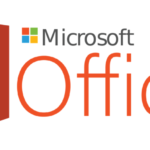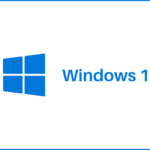What is Asp.net
Microsoft created the web development application framework known as ASP.NET. It enables the creation of comprehensive dynamic, data-driven online applications and services by Microsoft or other web developers. It is built on the Microsoft.NET Framework and offers a full development environment for creating web applications in a variety of programming languages, including C# and Visual Basic.

Web developers may create web applications utilizing the Model-View-Controller (MVC) architecture with ASP dot NET. It divides the data and application logic from the user interface. It enables programmers to design web apps that are simple to test, maintain, and update whenever necessary.
The ASP dot NET web development script offers a wide range of capabilities and tools to web developers. Which mostly consists of these.
- Web Forms – utilizing HTML, CSS, and java script, you can design a user interface utilizing a drag-and-drop interface in ASP.NET.
- MVC – The user interface and application logic are separated using this design pattern.
- Web API – A framework for creating restful web services is the Web API.
- Razor – This syntax allows you to use C# or Visual Basic to build dynamic web pages.
- Entity Framework – A framework for data access that makes database development easier.
- Authentication and Authorization (A&A) – a method for managing access to online services and applications.
For developing enterprise- and client-level web development apps and services, ASP.NET is frequently used. Additionally, it has a huge and vibrant community of users and web developers.
Advantage and disadvantage of asp dot net
Benefits of ASP.NET.
- Quick development – ASP.NET offers a variety of functionality and numerous pre-existing tools to web developers. It enables them to construct online interactive and dynamic apps fast and simply.
- Cross-platform support – Because ASP.NET allows cross-platform hardware and operating system development, you can independently create web apps for Windows, Linux, and macos.
- Excellent speed – With features like caching, session management, and compiled code, ASP.NET is designed for excellent speed.
- Security – To assist shield online applications from security risks, ASP.NET offers you a variety of built-in security capabilities, such as authentication and authorization.
- Scalability – Because ASP.NET is scalable by design, it can manage high volumes of online web data and information traffic without degrading performance.
The drawbacks of ASP dot NET.
- Complexity – For a novice web developer, learning ASP.NET web development scripts might be challenging. Especially for web developers that use the NET Framework.
- Price – Because ASP.NET is commercial software, a license cost can be necessary. Which might be an expensive deal for companies or independent developers.
- Limited platform support – ASP.NET does allow for cross-platform programming, however not all platforms may support all of its capabilities.
- Vendor lock-in – ASP.NET is a Microsoft product, thus this is a concern. Therefore, a web developer may find it challenging to transfer to a different platform or technology stack in the future.
- Performance Overhead – ASP.NET web development scripts are optimized for great performance, however, there is still performance overhead. However, the.NET Framework has considerable performance costs, particularly for smaller applications.
Characteristics of asp.net
Here are a few of the ASP dot NET web development framework’s standout characteristics.
- Server-Side Scripting – The server-side scripting language used by ASP.NET. It implies that before being delivered to the client’s browser, the web development code is first run on the server. It enables the processing of internet data in web browsers and the generation of dynamic content.
- Object-oriented programming – ASP.NET web development scripts are built on top of the.NET Framework and make use of C++ capabilities like classes, inheritance, and polymorphism to construct sophisticated applications.
- Quick development – The ASP.NET web framework offers a wide range of tools and functionality to web developers. It makes it possible for web designers to create web apps rapidly and effectively.
- Scalability – ASP.NET was created with scalability in mind. This indicates that it can manage heavy web data and information flow without degrading performance.
- Security – ASP.NET offers site designers a number of built-in security tools to guard against security risks. Online web authentication and authorization, among other features.
- Extensibility – In order to add new functionality and features, ASP.NET can always be expanded using new libraries and frameworks like jquery and angularjs.
- Cross-platform compatibility – The framework’s cross-platform version, ASP.NET Core, may be used with Windows, Linux, and macos computers.
- Database integration – To support the creation of data-driven Web applications, the ASP.NET development framework offers integration with a number of databases, including SQL Server, Oracle, and mysql.
In conclusion, ASP.NET is a reliable and strong platform for creating online applications. It offers a variety of tools and capabilities for web developers to create scalable, secure, and dynamic online applications.
Why asp.net
Here are a few of the main justifications for using the ASP.NET web development platform by programmers.
- Large and active community – ASP.NET has a huge and active user and developer community online, so web developers can always obtain assistance, tools, and fixes for common issues from other developers.
- Integration with the.NET Framework – The.NET Framework is the foundation upon which ASP.NET is constructed. It gives the web developer access to a wide range of web libraries that are already available and several tools for creating online applications.
- Quick development – ASP.NET offers a wide range of web development tools and functionality to web developers. It makes it possible for them to swiftly and effectively construct any web apps.
- Cross-platform support – The Core Framework’s cross-platform version, ASP.NET, is available. Which implies web developers may construct a wide variety of web apps for a wide range of platforms since they can operate on Windows, Linux, and macos.
- Security – To assist shield applications from security concerns, the ASP.NET Web development framework includes built-in Web security capabilities including authentication and authorization.
- Scalability – Because ASP.NET is scalable by design, it can manage high volumes of online data and information flow without degrading performance.
- Database integration – To support the creation of data-driven Web applications, ASP.NET offers integration with a number of databases, including SQL Server, Oracle, and mysql.
ASP.NET is a strong and reliable online application framework, to wrap things up. It offers a variety of features and online tools for web developers to create scalable, secure, and dynamic web applications.
Role of asp.net
These are some of the primary responsibilities played by ASP.NET.
- Web Application Development – The web developer has access to a wide range of tools and functionality with ASP.NET. This makes it possible for web developers to create dynamic, data-driven online applications fast and effectively.
- Server-Side Scripting – The server-side scripting language used by ASP.NET. It means that before being delivered to the client’s browser, the web script code is run on the server. It enables the processing of data and the generation of dynamic content.
- Object-oriented programming – ASP.NET is based on the.NET Framework and creates sophisticated programs using principles from object-oriented programming, such as classes, inheritance, and polymorphism.
- Scalability – Because ASP.NET is scalable by design, it can manage massive volumes of data and internet traffic without degrading performance.
- Security – To shield online applications from security concerns, ASP.NET comes with built-in security capabilities including authentication and authorization.
- Cross-platform support – The Core Framework’s cross-platform version, ASP.NET, is available. It may be used to create web apps for a variety of platforms and operate on Windows, Linux, and macos.
- Database integration – To support the creation of data-driven Web applications, ASP.NET offers integration with a number of databases, including SQL Server, Oracle, and mysql.
Finally, the creation of dynamic, data-driven online applications relies heavily on ASP.NET. Which offers a variety of tools and capabilities for ASP.NET developers to create scalable, secure, and dynamic online applications.
Asp.net with mvc
Building online applications often uses the Model-View-Controller (MVC) framework from ASP.NET. Which divides the web application into model, view, and controller as its three primary components.
The application’s data and business logic are represented by the model. It contains the application’s data and offers tools for manipulating it.
View is in charge of rendering the application’s user interface. It gives the user access to online data and enables easy interaction with the program.
Input from the user is handled by the controller, which also updates the model and view as necessary. The revised data is sent to the view for rendering when the model has been changed and user input has been processed.
The ASP.NET MVC framework offers a number of advantages for creating online applications, chief among them being.
- Separation of concerns – Using an MVC design, the program is divided into many components. Hence making the codebase’s management and maintenance simpler.
- Testability – The MVC design makes it simple to test the application’s different components separately. Enhancing the code’s overall quality in the process.
- URL routing – is a feature of the MVC framework. Because of this, designing neat, search engine-friendly urls is simple.
- Extensibility – The MVC framework is very extendable, allowing web developers to integrate custom functions and features.
- Framework integration ASP.NET – MVC interfaces with other well-known frameworks like jquery and angularjs. It offers developers a wide range of features and tools for creating dynamic web apps.
ASP.NET with MVC is a strong framework for creating dynamic, data-driven web applications, to wrap up. It offers programmers a variety of tools and features to create online applications that are scalable, secure, and maintainable.
Net framework
Microsoft created the.NET foundation, a foundation for creating applications. It offers a complete runtime environment and programming model for creating and executing software and web applications.
The.NET Framework offers various advantages for the creation of applications, among them.
- Interoperability – across languages.NET Framework supports a variety of programming languages. Such as C#, Visual Basic, and F#, which may all be utilized to create interoperable programs.
- Automatic Memory Management – A garbage collector is a part of the.NET Framework. Which handles memory deallocation and allocation automatically. It facilitates developers’ use of memory.
- Framework Class Library – A large class library is part of the.NET Framework. It offers a broad range of features that make application development easier, including file I/O, networking, and cryptography.
- Cross-platform development – Through.NET Core, the.NET Framework offers cross-platform programming. This enables the development of such apps by software developers. Which is compatible with macos, Linux, and Windows.
- Security – A number of built-in security mechanisms are present in the.NET Framework. Such as code access control, which can assist in defending programs against security risks.
- Scalability – .NET Framework is made to be scalable. It can therefore manage massive amounts of traffic and data without degrading performance.
The.NET Framework, which has been extensively accepted for creating desktop, online, and mobile apps, offers web and software developers a complete programming model and a runtime environment to construct and run programs.
Asp.net framework
ASP.NET consists of numerous components, viz.
- Web Forms – With the help of a drag-and-drop interface, this component enables asp.net web developers to quickly design web apps. This substantially streamlines the process of developing a website.
- MVC – For creating web applications that are simple to test and manage, this component offers a robust model-view-controller architecture.
- Web API – With the help of this component, web designers may build restful web services. Which other apps may utilize.
- Real-time communication – is made possible between the client and the server via the signalr component. This is advantageous for programs that demand real-time updates.
- Entity Framework – An object-relational mapping (ORM) framework is provided by this component. It makes database operations in ASP.NET applications simple.
- Authentication and Authorization – Authentication and authorization are supported natively by ASP.NET. Allowing them to manage who has access to their apps.
ASP.NET is an effective platform for creating dynamic, data-driven web development applications, to sum up. Which offers a variety of tools and capabilities for web developers to create scalable, secure, and maintainable applications.
Asp full form
ASP stands for “Active Server Pages”.
How to create page in asp.net
You mainly follow these steps to create a page in ASP.NET.
First open Microsoft Visual Studio.
- Create a new ASP.NET Web Application project.
- Select the type of project you want to create, such as Web Forms or MVC, etc.
- Choose a built-in template for your new page, such as a blank page or a page with pre-built components.
- Customize your new page by adding and arranging components such as buttons, text boxes and images, and adding functionality using code.
- Test your new page by running the application in a web browser or using a web server.
Here’s an example of building a basic ASP.NET Web Forms page.
- Open Microsoft Visual Studio.
- Choose File > New > Project.
- Select ASP.NET Web Application and give your project a name.
- Select Web Forms from the list of available templates and click OK.
- A new Web Form page will be created with a default layout. You can customize the page by adding and arranging components from the Toolbox, which can be found on the left side of the screen.
Once you have customized your page. Then you can run the application by going to Debug > Start Debugging or by pressing the F5 key. The application will open in a web browser, and you can test your new page by interacting with the components you added.





































































































































































